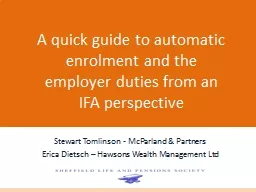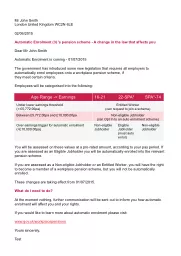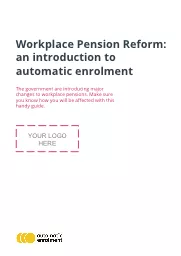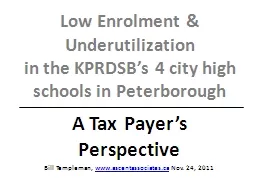PPT-A quick guide to automatic enrolment and the employer duties from an IFA perspective
Author : pasty-toler | Published Date : 2018-03-09
Stewart Tomlinson McParland amp Partners Erica Dietsch Hawsons Wealth Management Ltd What we are looking at today Employer duties Worker status Pay Reference Periods
Presentation Embed Code
Download Presentation
Download Presentation The PPT/PDF document "A quick guide to automatic enrolment and..." is the property of its rightful owner. Permission is granted to download and print the materials on this website for personal, non-commercial use only, and to display it on your personal computer provided you do not modify the materials and that you retain all copyright notices contained in the materials. By downloading content from our website, you accept the terms of this agreement.
A quick guide to automatic enrolment and the employer duties from an IFA perspective: Transcript
Download Rules Of Document
"A quick guide to automatic enrolment and the employer duties from an IFA perspective"The content belongs to its owner. You may download and print it for personal use, without modification, and keep all copyright notices. By downloading, you agree to these terms.
Related Documents














